► The sports car giant test 2015
► 64 cylinders, 4493bhp, eight cars
► And the winner is…..
The pre-fight weigh-in by CJ Hubbard
The sun is shining. Only kidding; it’s chucking it down, the gods having a particularly acute sense of humour when it comes to significant Giant Tests. Fortunately, we’ve come prepared. Not only is every car here finished in thermonuclear shades – the bloody red of the prancing horse being as subtle as it gets – with a cylinder count of 64 and a combined output of 4493bhp, we’ve enough power to generate our own microclimate. Certainly, we won’t have any trouble keeping warm. Welcome to the 2015 Sports Car Giant Test.
You’d be forgiven for thinking we’ve finally waved farewell to anything approaching reality, such is the rarefied atmosphere of performance and price this assembled machinery occupies. But the whole point of the SCGT is to assess the year’s best driver’s cars, surely? 2015’s crop is so spectacular that we had to be selective, and there are certainly no ‘maybes’ among these giants. Including the Corvette Z06. America attempts to take on Europe, again – but the Z06 boasts a race-developed chassis and a 650bhp supercharged V8 which, in noise and ferocity, borders on terrifying.
Talking of scary, have you seen the Aventador SV? Over 2m wide, it looks pointier than the peak of punk and has the biggest, most powerful engine here – by some margin. Yet it feels surprisingly at home on a B-road. The madly proportioned Mercedes-AMG GTS pulls off a similar trick, deft and controlled despite a visual impression that suggests it’s all engine… though that biturbo V8 is quite the storyteller.
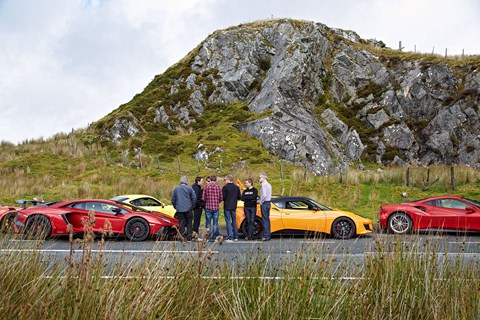
Closest pair of actual rivals on test are the Porsche Cayman GT4 and Lotus Evora 400. Both are mid-engined coupes, building on exceptionally talented preceding models; but it’s still a shock that the Lotus costs more – and that Porsche has actually gifted the Cayman with more advanced suspension than a standard 911 GT3. Question is, has the GT4 bitten off more 911 than it can chew in this instance – or will costing more than double count against the competing GT3 RS? The 493bhp 4.0-litre six squatting over the rear wheels will certainly have something to say, and nothing else here looks as much like a starting grid refugee. What are you betting on: mid-engined manual or rear-engined PDK?
Yes, we know, two Porsches – talk about loading the deck. But 2015 is also the year Ferrari finally succumbed to forced-induction pressure. The 488 GTB is a stunningly
capable, ultra-modern supercar; a machine with which Maranello is attempting to out-McLaren Woking by blending high-tech turbocharging with Italian passion.
The 675LT doesn’t look worried, though. Almost as light as the Lotus and packing a fulsome 666bhp, it’s 33% enhanced over the 650S. There’s also a very un-Ron hint of swagger about that back end. Seriously predatory.
The contenders
Lotus Evora 400: £72,000
Reworked Evora offers easier cockpit access together with a thumping 400bhp. Super-sweet chassis is a serious charmer, but can that interior really justify more money than a Cayman GT4?
Mercedes-AMG GTS: £110,500
Son of SLS is gorgeous on the outside, awkward on the inside – but all ergonomic concerns melt away as soon as you fire up that irascibly responsive twin-turbo V8. Oh Lord, what an engine.
Porsche Cayman GT4: £64,451
The Cayman that doesn’t just shout ‘Grandad!’ behind the 911’s back, it also spray paints it on the old boy’s garage door before legging it with a bunch of GT3 parts. So special for the money.

Lamborghini Aventador SV: £321,723
Lamborghini’s timeless V12 eschews 21st century hybrid or turbo assistance to crank out 740bhp the old-fashioned way. Lob in adaptive dampers and crazy aero and sparks will fly. The best driver’s Lamborghini ever? Possibly.
Porsche 911 GT3 RS: £131,296
The most extreme current 911. With its fast-shifting PDK gearbox, screaming 4.0-litre straight six – last bastion of the non-turbo 911? – rear-wheel steering and rollcage, the RS really is a road-legal GT racer.
McLaren 675LT: £259,500
The devil’s own McLaren. Longtail LT justifies its name with increased active rear aero – just one of the changes to a car that’s 33% different to its 650S stablemate.
Pick a winner from that little lot. Over to you, Ben Barry…
Battle royale by Ben Barry
It’s gone 9pm when I grope around in the CAR key box, finding only a yellow fob and a note to meet the others in a bar in north Wales. AMG, Ferrari, McLaren… all have struck out for Britain’s left-hand side.
But this is hardly the scraps from a late-night Hertz desk: I’m driving the Porsche Cayman GT4; a £64.5k piece of heaven, and a crucial wedge of context.
You’ll probably know the GT4 as the first Cayman to out-punch 911. It uses the Carrera S’s just-killed flat-six, detuned to 380bhp, but still 15bhp clear of even the base Carrera’s new flat-six turbo. Extra oomph, a fettling by Porsche’s greatest GT minds… the mid-engined Cayman is finally off the leash.
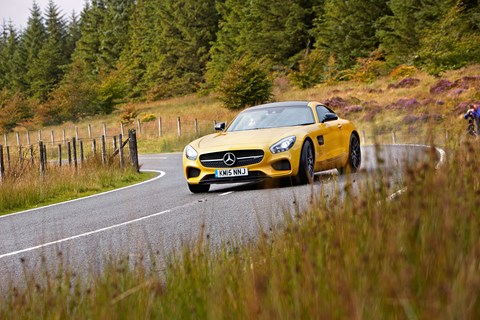
There’s more going on here than just extra power, though. The changes compared with even the GTS, previously the range-topping Cayman, are immediate and striking: the clutch has a heavier physicality; the stubby gear lever the truncated throw of an arcade joystick; the brake pedal less give than a Hungarian border. Everything feels taut, mechanical and purposeful.
Headlights flick over hedgerows as I cut cross-country, road noise filling the cabin like AM radio static, the engine’s warm, bass-heavy howl building at lower revs as I wait for the oil to thin with temperature. When you do use all the flat-six’s guts, there’s a kick past 5000rpm that elevates the GT4 well above its mid-engined siblings, an intensity of speed that makes you grip that alcantara wheel rim hard and focus every bit of mental capacity. The GT4 is genuinely quick and makes you wonder – and here’s that context – why you’d need another 200bhp.
Furtive fumbles through damp roundabouts reveal the chassis to be sweetly balanced, if too competent to slide purely with throttle prods. I start to feel comfortable with the treadblocks slipping, tapping into this car’s deeply satisfying adjustability – beats a six-pack of Red Bull when you’re fighting for concentration.
The bar’s closed, the others long retired when I arrive after midnight. But I can’t sleep after that buzz, wondering if costlier rivals can really answer the Cayman’s brilliance.
I’m woken next morning by the whoosh of lorries dispersing standing water and seven blokes firing V8s, sixes and a V12, all droning,
wavering, vaguely menacing idles that obviate my alarm clock. CJ’s crouched frowning at the Corvette’s Michelin Cup 2s like he’s struggling to decode a child’s fractured monologue. The tyres are part of this Z06’s track-focused Z07 pack, derived from the same gene pool as the Cayman’s, only someone appears to have transferred the same tread to a far wider hunk of rubber, leaving vast slick tranches on the outer halves. I don’t want to headbutt a wall 90 seconds out of Betws-y-Coed, so I slip into the Mercedes-AMG GTS; yep, a 503bhp V8 appears friendliest today.
With the Cayman still fresh in my mind, the first few miles in the GTS are anti-climactic: the steering numb, the whole car desensitised. But Gavin drove it last night, loves it, says I need more seat-time.
He’s right. You can miss the Merc’s completeness on tests like these, when we’re chasing a rush, not always thinking about living with the things. Pick one car here to do everything and the Merc wins. It’s comfortable and refined, the infotainment excellent. Shame the centre console is so vast, its tiny gear selector so far back that you fumble at it like an ape scratching armpits.
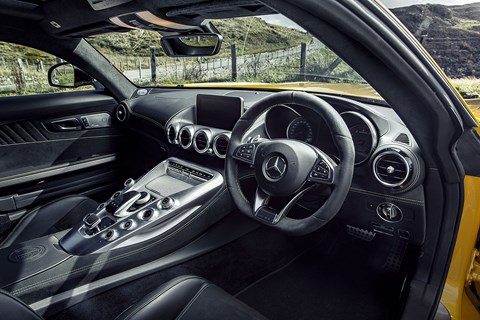
On the plus side, the configurable buttons in that centre console actually serve a purpose: the AMG rides with cushy compliance – ‘it just absorbs bumps then kills any body motion dead,’ notes CJ – but the softest suspension setting is too boaty when you’re pushing on, so you press Sport, quelling roll without destroying the ride. The exhaust note’s too subdued for a car whose luminous yellow schnozz arrives ten minutes before you, but another button unleashes a muscle-car wobbling at low revs and thunderous farts during high-rpm gear swaps. Much better.
Just because the AMG shrugs off daily duties doesn’t mean it can’t entertain. The V8 is so far behind the front axle it’s almost in the passenger seat, so even though you’re riding the rear axle like Ben Hur, the AMG’s eagerness to change direction feels centred around your kneecaps. You learn to trust that slightly aloof steering, knowing you can twist it with a wrist-flick. Lean on the front end, work the mighty brakes and just nail each apex at daft speeds. Excellent engine too – serious speed, great response, generous torque – and while the gearbox isn’t as sharp as the best, it’s good enough. It doesn’t baulk at high-rev shifts to second like AMGs once did, and the Sport+ setting chucks the right gear into the mix bang on cue.
A twin-turbo V8 sounds a handful in a deluge, but the AMG’s chassis is so accomplished that killing the stability system is no deathwish: the rear rubber breaks away
in completely linear fashion.
Not so the V8 supercharged Corvette. You sit low in a cabin of surprisingly sophisticated finesse – even AFC is impressed, a man whose colouring-in is a match for his deft penmanship – a plaque on the dash warning that there’s 650 horsepower and 650lb ft of torque lurking under that long right pedal. There’s also a grab handle that swoops down from the instrument binnacle to the passenger side, but handily it’s also easy to reach from the driver’s seat with your eyes closed… And you will get scared: prodding the throttle hard is like yanking on a lion’s tonsils, or pulling open a trapdoor to oblivion.
The Corvette is not lacking polish. Its steering is light and feelsome, the chassis well controlled, and there’s an agility that confounds initial expectations. But those tyres and that massive torque-rush make it just a bit terrifying in these conditions. Through a fast corner, the nose washes half-a-metre wide, and when I turn off the traction control there’s such an excess of power that it becomes difficult to measure out in satisfying fizzes of tyre slip. I turn the electronics back on for fear of leaving Wales backwards and crashing into Birmingham.
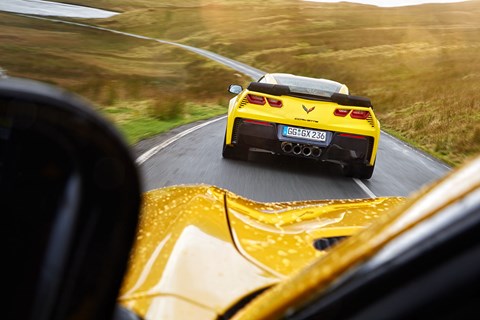
I’m sure the Corvette would be epic in the dry, and it’s important to stress that we’re essentially on slicks battling a field on inters here (ditching the Z07 pack would’ve upped its chances in this instance), but today the ’Vette covers fewer miles than rivals; it just makes us all cry when we accelerate, though Gavin crowns the V8 the standout engine of the test.
Unbelievably, the Lamborghini is less intimidating. Two years ago the Aventador Roadster flunked our annual sports car test, but the SV feels like a different car.
Don’t get me wrong; at first the fear factor is immense. You open the dihedral door, sink into a carbon chassis on what feels like a wooden chair wrapped in alcantara, unnerved that the brake pedal presumes left-foot heroism. It’s like perching inside an arrowtip; near-horizontal windscreen, roof whizzing overhead like a glancing bullet, nose disappearing to a distant point. Eyeballing the rear-view mirror is not for the faint-hearted: several metres of V12 wearing a Batcape lives back there.
But immediately the SV feels happier than any other Aventador. The revised inboard dampers bring suppleness and control, there’s no tramlining and the steering has weight and tactility. Lamborghini’s carbon brakes once offered quicksand-feedback but now you ease in on them, sensing the pressure build, working intuitively against the pedal. Amazingly the SV starts to cloak around you, giving you the confidence to exploit its potential.
And that potential is truly awesome. The V12 pulls ferociously as soon as you prod the throttle, yelping between gear changes and lunging at the redline with such endless linearity that you’re too overawed to breathe. The sequential manual gearbox can be sluggish, but the harder you go the cleaner the engagement, especially in Corsa mode. Run to 8500rpm and the digital dash frantically strobes blue; pulling the paddleshift sends a defibrillator jolt through the powertrain, and speed continues to build on an apparently logarithmic scale. Really quick cars often silence passengers but the SV makes them oof and swear; they react in instinctive grunts to the V12’s sensory bombardment.
Maybe in the dry the SV will be more grip-at-all-costs vicious, but in the wet the all-wheel drive has fluidity and delicacy. Okay, so sometimes the steering goes rigor-mortis solid as a massive hit of power churns through the front driveshafts, but the Lamborghini typically feels both rear-biased and sure-footed. They could’ve fitted more extreme tyres but the P Zeros’ wet-weather performance, and the fact you can feel their treadblocks shifting, adds to the Lamborghini’s unexpected andvery satisfying delicacy. You’re left buzzing and deeply impressed; impressed that this old-school supercar serves up its analogue experience without caveat – it doesn’t ask that you excuse a load of rubbish bits as ‘character’.
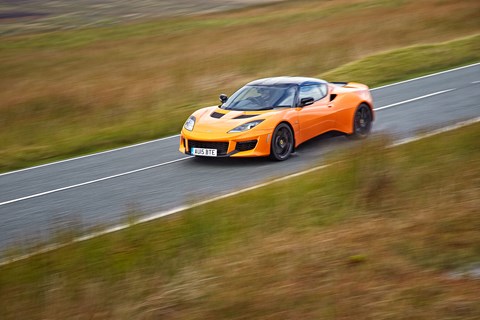
The Lotus Evora does. Recently revised to be faster, sharper and easier to live with, thanks to a tweaked cabin and sills you don’t have to be a long-jumper to straddle, the Evora 400 costs £72k and makes 395bhp from its now-intercooled 3.5-litre supercharged V6. There’s a lot to like about the 400: the fingertip-delicacy of its steering is just sensational, the chassis flows and grips so you can attack as hard as your talent allows, and the V6 warble is deeply sonorous – ‘sounded amazing when you came past,’ says Ben Miller – with a meaty top end where the regular Evora once wheezed.
But it’s easy to nit-pick. The seats are mounted nearly as high as the Toyota-sourced engine, there’s pronounced roll from the rear when you really chuck it at a corner, and the pedals are set up like a Steinway’s. The brake and throttle are too far apart for heel and toe, the throttle is tricky to modulate – ‘and it gets worse in Sport,’ notes James Taylor, ‘like there’s nothing at the top, then everything’ – and the brake pedal’s feel isn’t clearly enough defined. But the Evora’s biggest problem, of course, is the cheaper, better-resolved Cayman GT4. Question is, can the GT4 give the 911 GT3 RS a run for its money?
Turn the key and the GT3 RS’s 4.0-litre six chunters heavily at idle. You snuggle into low-slung, comfortable bucket seats – with a rollcage where a Carrera’s seats would live, it’s like the car’s escaped from the GT department and grabbed sat-nav and Radio 4 on the way out.
The RS is a scintillating drive: accurate, nicely weighted steering; a super-sharp, closely stacked dual-clutch ’box; fearless brakes. Despite its race DNA the RS rides with amazing pliancy and grips so hard it feels like it’ll peel tarmac from bedrock before letting go. The RS simply goes exactly where you point it, even when conventional wisdom would suggest the car’s travelling far too fast to do so.
Somehow the six feels a little gutless from low revs in this largely turbo-assisted company, but the throttle response, noise and the feral violence that accompanies every mission to the 8800rpm redline is ultimately more rewarding. The torque deficit and accomplished chassis also means that the stability systems are safety nets, not essential equipment; you can use all that the 911 can give almost all of the time.
The Cayman, of course, is slower, but its steering also has less definition, and there’s a bit more vertical choppiness to the ride, probably because of the mid-engined car’s shorter wheelbase. The Cayman’s brake pedal is also very firm right from the top of its travel, where the RS has a fraction more give; it’s easier to accurately bleed off speed in the RS.
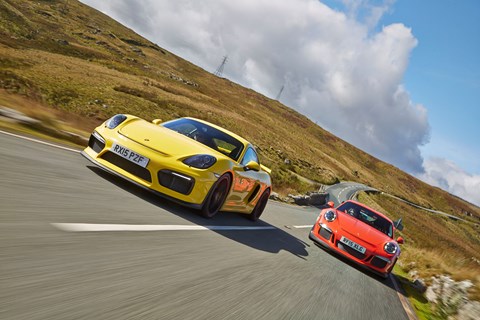
Broach their limits and the two feel quite different. The Cayman has some high-speed understeer on damp roads, so you exploit its intrinsic balance by tip-toeing right up to that line then throwing in a load more steering and throttle. The RS’s limits are significantly higher, so to play with its balance you must go in hard on the brakes to shift some of the flat-six’s weight from the rear wheels, then steer and accelerate more forcefully than in the Cayman. The first time you feel the rear slide, and realise you’re dictating the angle of slip and that the RS is not going bite, is just sublime. It’s playful and perfectly balanced and, for me, demolishes the idea that the Cayman is the more agile car.
The other great grudge match here? Ferrari versus McLaren, of course. Since the Ferrari 458 beat the 12C in 2011, McLaren has been busy. The 12C became the excellent 650S (third in last year’s test) and now there’s the 675LT; more focused chassis, 100kg lighter, more downforce, extra shove. Meanwhile, the engine that helped the 458 to victory – its incredible naturally-aspirated V8 – has been pensioned off, replaced by the 488 GTB’s twin-turbo V8.
But the response of Ferrari’s new engine makes you question if there are any blowers strapped on at all: there’s no lag, just linear delivery and instant response and – because all 561lb ft is held back for seventh-gear flexibility – you’re as keen as ever to chase the revs. The 3.9 doesn’t have the 458’s top-end scream, but the deep, bassy roar and whistling backing track still make you tingle, and the mid-range delivery simply destroys the 458’s. Combined with a dual-clutch gearbox that’s swifter than anything else here, it’s actually impossible to fall out of the powerband.
The powertrain’s precision, the easy accessibility of its manettino dial compared with McLaren’s faffier Active Dynamics Panel and the sense of control you have over the electronic rear diff makes this an incredibly incisive car, one that’s easy to push to its limits. Approach a corner, tweak the steering, feel the rear axle ready itself and then enjoy a carefree adjustability that’s more rewarding than the 675LT.
First encounters can be a little off-putting though. Ferrari’s famously fast steering – now meatier and better detailed than the bantamweight 458’s – lends inertia-free agility but also conveys an initial nervousness; it takes time to dial in, and to understand that even the smallest inputs yield exaggerated movements. Combined with the massive boost surplus, you can feel reluctant to play with the traction on a damp road; the well-judged stability control becomes an
essential element of its frisky willingness to change direction, and I’d bet novices would put a 488 in a field before the GT3 RS if the government decided that electronic safety systems were cheats and we should all man up.
Yet this is a very accomplished supercar, and that’s with the 488 GTB sacrificing ultimate performance to create something more rounded than the McLaren. The Ferrari’s suspension is compliant, its cabin noise more hushed than the GT Porsches, the Pilot Sports better able to shift water than the McLaren’s Trofeos.
A lighter, harder, faster 488 will be along to battle the 675LT in a few years’ time, but that seems a long time to let a McLaren this focused roam freely. Climb in and you feel instantly hardwired into the 675LT: its P1 hypercar seats are mounted low and put your backside closest to the deck, Alonso-style. The steering bristles with texture, and every exploratory nudge at the faster rack builds confidence in a taut, connected chassis. The LT is a lot firmer than the 650S, and while the compliance remains impressive, I’d have made Normal my Sport, with a softer mode beneath.
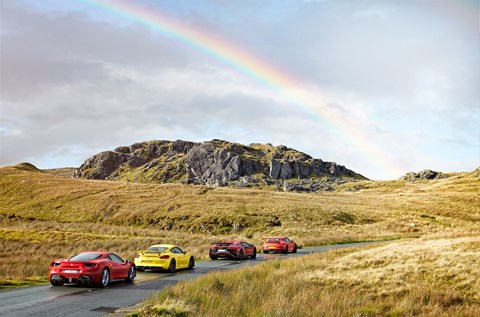
The 3.8-litre twin-turbo V8 makes a deeper growl from its titanium exhausts than the 650S; McLaren claims only a 25bhp and 16lb ft hike, but the new engine – 50% parts commonality – kicks with real ferocity. You still need 3500rpm before things get serious but that boost tsunami brings its own addictive anticipation.
Previously McLaren’s seven-speed dual-clutch gearbox was too tardy to drop three gears in quick succession, with two coming snappily while the third slurred. Now the changes are like finger-clicks.
Like the SV, the McLaren presents its brake pedal to your left foot, and like Lamborghinis of old, McLaren’s carbon-ceramics were once fuzzy when you toed at the first few centimetres. But the LT’s brakes are exceptional; a little give as pads first clamp discs, then power and feedback even an untrained left foot like mine can decipher.
Because both the Ferrari and Porsche engines have such linear response, and because both have locking rear diffs, those cars have a crisper relationship between throttle pedal and rear axle when tyres start to slip, and that brings a more satisfying sense of control, but the McLaren is still an incredibly interactive experience.
The sun’s shining brightly now; standing water ebbing fast, the McLaren’s hardcore Trofeo tyres keying into the surface. I wind third past 7000rpm, pull for fourth, spy a vestigial kick of spray round a corner and keep it pinned. When the road opens there’s a huge red spoiler visible through the dazzle and spray ahead. I close on the GT3 RS, hear its 4.0-litre screaming to 9000rpm and wonder if I might just be driving this year’s winner. Then there’s a noise from the McLaren’s bowels, a loss of power. I pull over. The GT3 RS disappears into the distance. Come on McLaren, you can retire from every other GP but you can’t produce a car as exceptional as this only to fall at the final hurdle…
And the winner is… By Gavin Green
We all like the car that must come last – this is one of those tests. The Corvette’s NASCAR V8 growl is bewitching, its punch of torque intoxicating, and the Z06 copes with narrow, undulating, pitted and gravel-peppered Welsh B-roads, surely the polar opposite of the wide, smooth blacktops for which it was bred. Had the Corvette engineers even heard of a Welsh secondary? Unlikely.
In the end, it’s just not sharp and precise enough for a British B-road, not when it’s facing opposition of this calibre. Those near-slick Michelins didn’t help, though they certainly boosted the entertainment factor.
Conversely, the Lotus is designed for these roads. The Evora has the best steering here, a sublime chassis, and copes with the dips and turns of a UK secondary as easily as a swift deals with a thermal stream. The Evora flows over these roads, never fighting. The downside is the V6 engine, void of the throttle sensitivity that the rest of the car deserves. Plus, that homespun style is a problem, especially in a car costing more than the Cayman.

The AMG boasts the widest capability: surprisingly nimble over the moors, relaxed on the motorway. The twin-turbo engine is fabulous, the gearshift less so. I like sitting behind that long bonnet, hefty horsepower up front, but ultimately it just can’t compete for entertainment on the twisty stuff, not up against the best from Porsche and Ferrari.
The Lamborghini SV – the traditional supercar of this bunch – won us over with its character, and surprised us with its composure. We love its V12. We love its agility, which defies its two metre-plus girth. In some key areas though – gearshift, seats – it can’t compete. Plus the terrible visibility and video-game instrumentation undoubtedly diminish driving pleasure.
So our top three, from bronze to gold, runs McLaren 675LT, Ferrari 488 GTB, Porsche 911 GT3 RS. If value for money were a factor (it wasn’t), the fourth-placed Cayman would win. How could it fail, when it costs half as much as a GT3 and one-fifth of an Aventador? We all love it. But its rival Porsche, the GT3 RS, is faster, sharper, more dramatic to drive, has more definition to its steering and better modulation to its braking.
The Ferrari is awesome, of course. The new turbocharged engine has slightly dulled the throttle sharpness of the old 458 and, more important, the linearity of the torque delivery. The flipside is that the turbo-inflating torque makes it easier to drive briskly, the power always on tap. It is a less frenzied sports car than the 911, more supple, less hardcore, not so immersive; majestically entertaining but somehow less engaging.
Ultimately, though, it doesn’t thrill or reward quite like the GT3 RS, our winner. The Porsche is a track car boasting surprisingly civilised road manners. The throttle response and barely credible 8800rpm redline are both sensational, the gearshift crackerjack instant. It is, very possibly, the best driver’s car Porsche has ever made.
And the 675LT? It may have won, were it not for its DNF – ‘a powertrain issue on a pre-production press car, and the result of damage sustained on a previous activity’ according to McLaren. To drive this driver-focused evolution of the 650S is to be smitten. The LT is more nimble than the GT3 RS, faster and enjoys better steering, though its engine is less sweet, if ultimately more forceful at high revs. The McLaren also boasts the finest driving position here. The only consolation is that there is always a next time.
The reckoning
8) Corvette Z06 – Extraordinary engine, fine chassis, scary tyres. Bargain in the US; £112,910 here…
7) Lotus Evora 400 – Dreamy steering but the details will keep you awake at night
6) AMG GTS – Too well-rounded to win, but AMG’s Gran Turismo is a fine sports car
5) Lamborghini Aventador SV – Best Lamborghini ever? Believe. A £315k, 740bhp triumph of evolution
4) Porsche Cayman GT4 – The runaway winner if you factor in price. No wonder its biggest issue is availability
3) McLaren 675LT – A cut-price P1, and as focused and rewarding as the 650S is versatile
2) Ferrari 488 GTB – Breathtaking agility and speed, delivered apparently without effort
1) Porsche 911 GT3 RS – Special like a race car; practical like a (two-seat) 911. Best driver’s Porsche yet
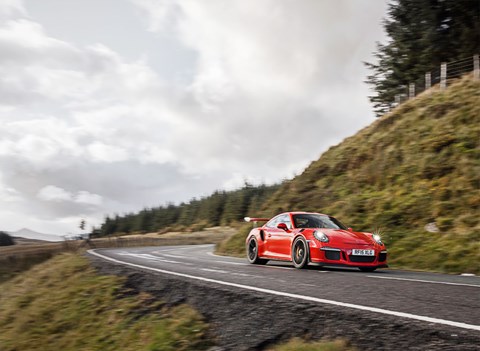
Second opinion: GT4 or 911 GT3 RS?
The GT4’s 3.8 elevates the Cayman to a higher plane, from quick to truly fast, while the chassis, so compact and wieldy, delivers such poise, agility and control that the little mid-engined Porsche still feels like it could handle more. Yes the gearing’s too long and yes there’s a refinement trade-off for the GT4’s uncompromising suspension, but it takes but five miles of the Cayman’s joyous predictability and interactivity to banish all doubt: this is one of the great Porsches.
But the GT3 RS is greater still. Its defining brilliance is the raw speed and drama of a racer in a road car you’d happily drive to Monaco tomorrow. The PDK ’box will slide through its ratios while you sip a Starbucks, just as it’ll seamlessly shift up as you screw the astonishing motor to its near-9000rpm redline. The ride is incomprehensibly compliant. Road noise is well suppressed. And yet the steering shimmers with feel and feedback, as you’d expect of a GT3 car, a product of Andreas Preuninger’s GT team (as is the GT4) bejewelled with details like a magnesium roof, titanium exhaust and bespoke induction system.
On the road it feels like the labour of love it is: obsessively honed, alive, exhilarating.
Ben Miller
Second opinion: AMG GTS or Corvette Z06?
Not so much a fish out of water as a man overboard, the roads of north Wales could hardly have suited the Corvette less. Very wide, very left-hand drive and on semi-slick tyres (part of the Z07 package, which also brings added aero), its keys were the least fought over. Shame, because in between bouts of heart-stopping terror it is an extraordinary, addictive thing to drive.
Quite apart from its sheer pace – you could restrict the throttle pedal’s travel by 50% and it would still feel monstrously fast – the Corvette is dynamically impressive, with mustard-keen turn-in, sophisticated damping and feelsome brakes. Bottom in the voting, but think of it in that most un-American of terms – last of the winners.
The AMG GTS – also front-engined, also yellow – could not be more different. Where the Corvette intimidates, the GTS is accessible. Yet first impressions are anything but encouraging; cluttered interior, over-assisted and remote steering seemingly plucked straight from an S-class. Then you gather speed, and immediately you feel plugged into the GTS’s superb balance and turbo-belying throttle response. For me, the AMG was the surprise of the test. This comfy GT is also an inspiring sports car.
James Taylor
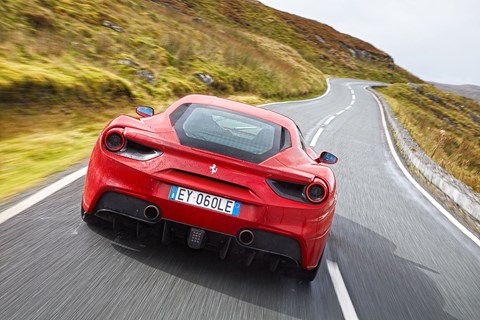
Second opinion: 488 GTB: can the ghost of 458 be laid to rest?
Let’s get this out of the way – the 488 GTB has lost the 458 Italia’s volume-dial throttle response. But if the throttle response of new Ferraris has been tempered by a switch to forced induction, do bear in mind that compared to its naturally-aspirated rivals it’s still pretty bloody sharp indeed. There’s no lag as you and I know it. If anything the powertrain’s synapse-snappingly clever electronics make the engine’s torque delivery feel more supercharged than turbo-blown. The wailing soundtrack is still superb and the savage lunge from 6000-8000rpm remains epic, so you’ll want to rev the engine to its redline. And yet the now more muscular mid-range muscle spears the 488 out of one corner and on to the next with effortless arcade-game ease.
And in normal driving – you know, the stuff that accounts for 99 out of every 100 miles covered – this makes the 488 a significantly easier car to drive fast. For a 660bhp car capable of quite indecent pace, the Ferrari is indulgently benign and relaxed. It feels fluid and smooth, allowing you to pour it along roads at white-knuckle pace without the white knuckles. There’s no twitchiness, no nervousness, just a confidence-swelling sense of calm and capability. Just like a 458. Only faster…
Ben Whitworth
Second opinion: RS, SV and LT – too much for the road?
Does hardcore make for a better drive? The 675LT, Lamborghini SV and GT3 RS Porsche are all firmer, faster and more featherweight iterations of three of the world’s best supercars.
Vast rear wings advertise enhanced downforce. There’s also increased power and, on the track-ready Porsche, a rollcage and a ‘pit speed’ button, crucial when fast-fuelling at Monza but somewhat less useful in a Welsh Shell garage.
The overt racetrack nature of the GT3 RS is one of its many appeals, backed up by that 8800rpm redline (and associated soundtrack), lightning-fast shifts, brilliant brakes, feelsome and precise steering, and a chassis of surprising deftness.
The SV is a surprise; far more composed on these challenging roads than the last cumbrous Aventador we sampled. The SV is agile, shrinking as you power on, never mind that the side mirrors betray just how close those big rear hips are to passing rocks and oncoming Transits.
And the LT? It’s a car of superb agility, brilliant steering and great ride. It’s the best car – F1 and P1 apart – McLaren has ever made. Equally, the SV is the best Aventador Lamborghini has ever made. Is the GT3 RS the best 911? I’d choose something more discreet but if it’s driving thrills you’re after, no Porsche – not even the hybrid 918 – does it better.
Gavin Green
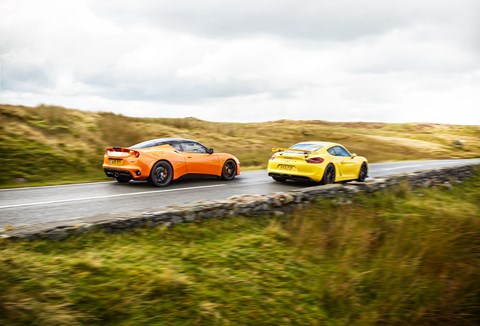
Second opinion: Lotus Evora or Cayman GT4?
Combine the vast muddy puddle that is north Wales with a spectacular range of exotica and there are two absolute givens; agreeable disagreements and trenchfoot. Odd then, that, unprompted, we were unanimous on just one issue: in isolation the Evora 400 is a rather splendid thing…
There’s a pleasing on-paper parity to the only two cars here offering a six-speed manual transmission, though the Porsche trumps the admittedly lighter – the steering wheel’s magnesium! – and more powerful Lotus on price by £7500. Though the Evora’s chassis remains a marvel and the steering utterly sublime, the absorbing fluidity of progress they combine to elicit is marred by the less than wholesome gear change, the occasionally awkward pedals which, when wet, mutate into three little bars of soap, the all-or-nothing throttle response, and so little flywheel weight that, unless you can change up faster than the aforementioned are happy to allow,
the revs drop like an anvil kicked off a cliff.
Meanwhile the Cayman simply excels; beautifully linear controls, a gearchange sweeter than candyfloss and exquisite handling.
With UK’s initial 50-car allocation all sold, getting hold of one won’t be a quick or easy process. Sob.
Anthony ffrench-constant
The specs:

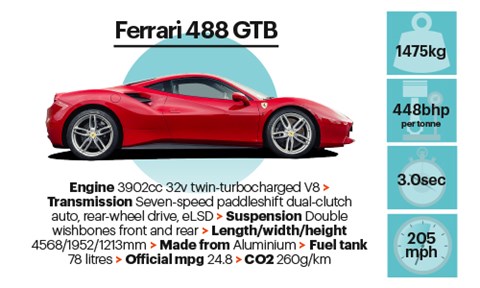

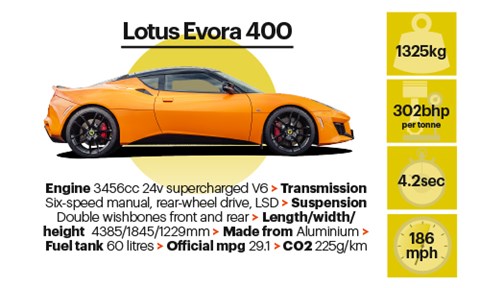
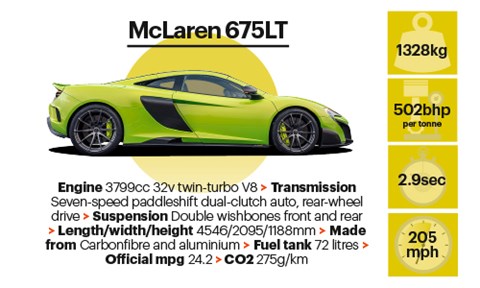
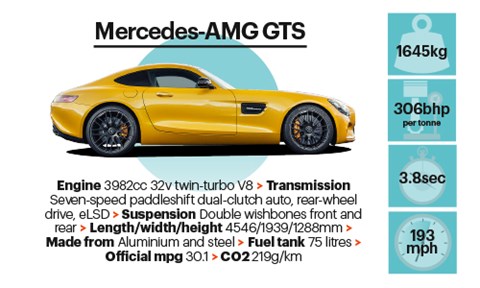
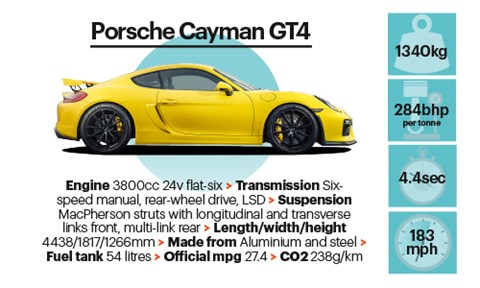
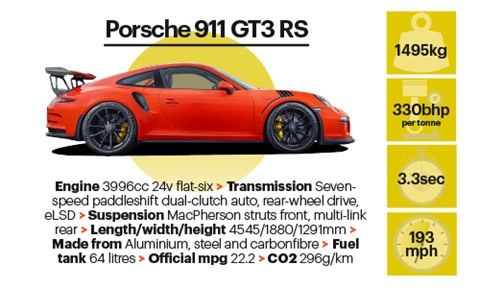
Watch a video introduction to SCGT 2015’s runners and riders below: